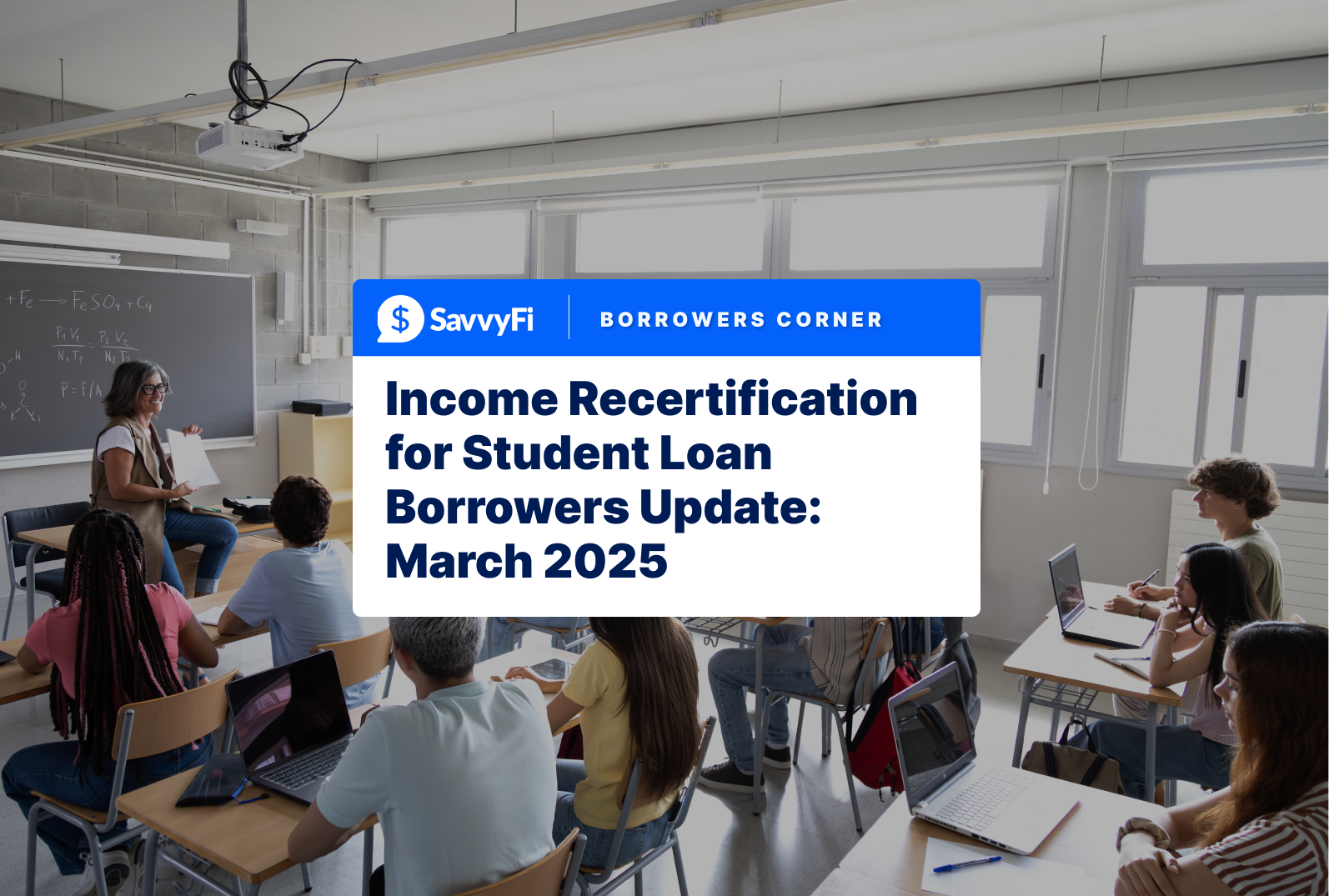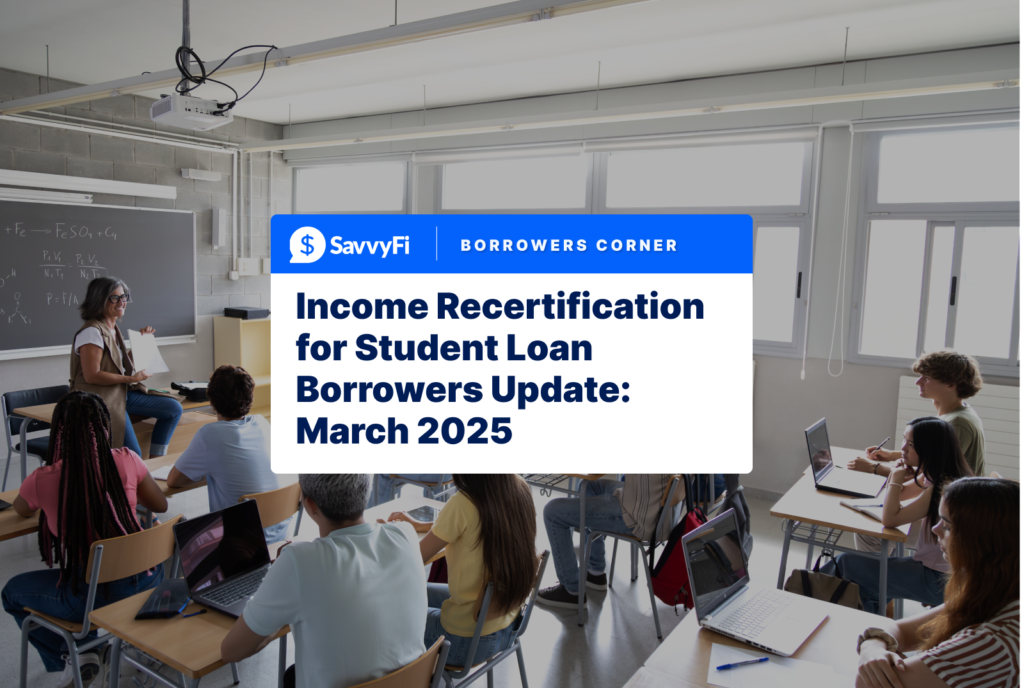With March Madness in full effect, student loan borrowers have been experiencing madness as well. Fortunately, the Department of Education provided guidance March 26: Here’s the link to the official update.

Jason DiLorenzo
As an employer consultant and student loan borrower advocate, Jason has taught best practices at top U.S. schools and hospitals.
Organizations have managed over $5 billion in federal student debt since 2010, under Jason's leadership.
And here’s Jason’s play-by-play summary:
🏀 The IDR Recertification Brackets
For those who are NOT in the SAVE forbearance:
If you were due to re-certify before Feb 20, 2025: You’re in the Early Bracket. That means your next recertification will be due this year — and your loan servicer should contact you at least 35 days before your specific due date. No buzzer-beaters here — you’ll get notice.
📣 Pro tip: You don’t have to wait for the shot clock to wind down — you can re-certify now at studentaid.gov if you’re ready (but keep reading before you do).
If you were due to re-certify on or after Feb 20, 2025: Welcome to the Late Bracket. You just got a 12-month extension — your next re-certification won’t be due until Feb 2026 or later. Think of this as a first-round bye. 🎉
⛹️♂️ The Application Portal: Back Online, But Still on the Bench
The IDR application is back up on StudentAid.gov, but this doesn’t necessarily mean you should take action — servicers still aren’t processing applications just yet.
DOE says processing should resume in May, so if you apply now, your request will likely sit in limbo until then. It’s probably best to wait until SAVE’s fate is determined before deciding which remaining repayment plan is best moving forward. The next scheduled court date in April may get us closer to an answer here….
💸 PSLF Buyback: Still in Play!
The new DOE leadership indicated that the PSLF Buyback program remains in tact and available; here’s the updated summary from DOE.
So if you’re pursuing PSLF and had months stuck in forbearance or deferment (especially during SAVE-related pauses), you can buy back those months to get closer to forgiveness. This is available now, and some borrowers have already taken advantage. Most, however, are waiting to buy back time in the ongoing SAVE forbearance, or haven’t reached 120 eligible payments yet.
Still, the confirmation of buyback is a relief specifically for those forced to watch federal court activities from the sidelines.
🕰️ What Now?
For most borrowers, this remains a waiting game. We’re still watching to see what happens as the SAVE Plan faces legal challenges and the broader IDR framework continues to shift.
In the meantime:
- 📝 Recert only if you’re in the Early Bracket (recert date was before Feb 20th and you didn’t take action by then)
- ⏳ Don’t panic if you’ve applied recently — it’s normal for processing to be slow
- 🏀 Keep your head in the game. We were happy to see this guidance, but the finish line remains a moving target.
We’ll be courtside with updates as the tournament continues.
How employers can help:
1. Provide Student Loan Repayment Benefits
Employers can use tax-efficient strategies to alleviate the burden of student loans.
- Section 127: Provides up to $5,250 annually in tax-free educational assistance.
2. Offer Tools and Resources for Loan Management
Platforms like SavvyFi make it easy for employers to support their employees:
- Streamlined Administration: SavvyFi integrates directly with loan servicers, simplifying employer contributions and ensuring compliance.
- Education and Transparency: Employees can access clear, actionable information about repayment options, forgiveness programs, and tax benefits.
- Comprehensive Support: From automating PSLF certifications to tracking progress under IDR plans, SavvyFi empowers employees to navigate the complexities of student loans.
3. Educate Employees About Repayment Options
Provide workshops or webinars on:
- Avoiding default through rehabilitation and consolidation.
- Transitioning to new repayment plans if SAVE is discontinued.
- Making informed decisions about refinancing.
4. Integrate Financial Wellness Into Your Benefits Package
Pair student loan repayment assistance with other financial wellness programs, such as retirement planning, to create a comprehensive support system.
How SavvyFi Can Make a Difference
SavvyFi is more than a student loan management tool; it’s a bridge to financial wellness for both employees and employers. By partnering with SavvyFi, your organization can:
- Enhance Recruitment: Attract talent by showcasing loan repayment benefits as part of your compensation package.
- Boost Retention: Reduce turnover by easing financial stress for employees with significant student debt.
- Streamline Processes: Simplify the administration of complex programs like PSLF and IDR plans, saving time for HR teams.
2025 will be a challenging year for borrowers as they navigate the resumption of loan collections, legal uncertainties around repayment plans, and a potential increase in defaults. Employers have a unique opportunity to step in and provide meaningful support that can transform the financial and emotional well-being of their workforce.
About SavvyFi: SavvyFi is a user-friendly fintech platform that makes it easy for employers to provide college savings and student loan benefits to their employees. Because the company’s platform is “zero-touch” to HR — without any complicated systems, integrations, or paperwork — SavvyFi unlocks education financing capabilities to even the smallest employers that would not otherwise be able to offer these benefits.
Disclosure: Third-party quotes shown may not be representative of the experience of all SavvyFi customers and do not represent a guarantee of future performance or success.





